|
BULB LOG 31 --- 2nd August 2006
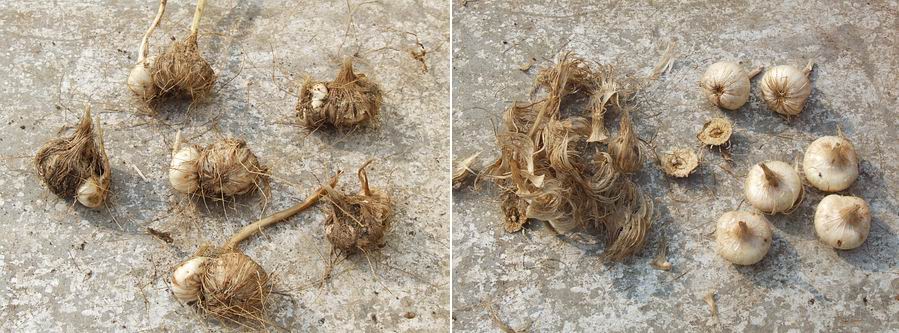
Tecophilaea corms
Here I show some corms of Tecophilaea cyanocrocus ; on the left they are complete with tunics, the remains of the old corm still attached to the base and an offset. In a good growing season I have had as many as three offsets from a single corm and again, depending on the season, these offset bulbs can flower the following spring.
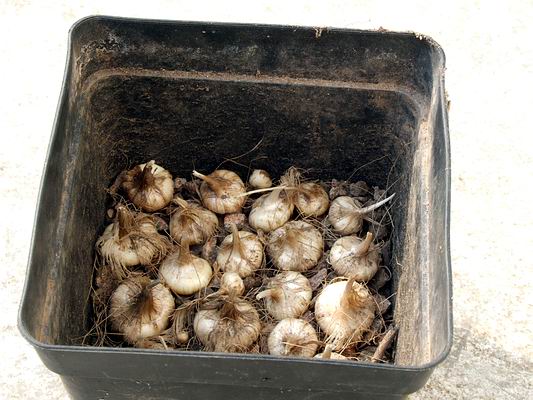
Tecophilaea corms potted
I clean them up by removing most of the excess tunic and the remains of the old corm from the base. Who does this in the wild and why do I do it are common questions. The answer to the first is of course no one does it to the wild plants, they have evolved this tunic, possibly as a means of protection, to help prevent them from becoming desiccated in long hot dry summers. My answer to the second is that I am growing them in a very artificial environment far removed from the conditions they face in their native habitat. I remove some of the tunic and more importantly the remains of the old corm from the base as this is a potential area for rot to set in if the compost is a bit cold and damp while the bulb is dormant - I have lost many corms to this rot over the years. Repotted back into a square plastic pot these bulbs will provide a good display of flowers next April.
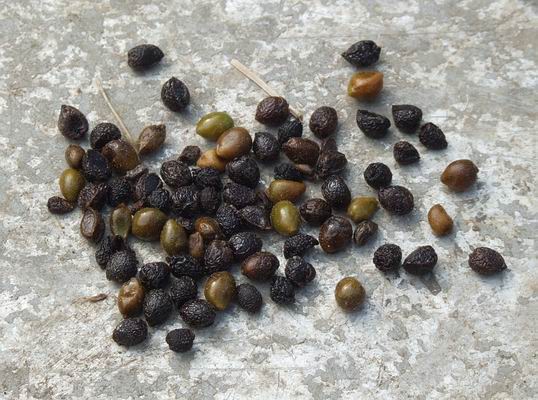
Tecophilaea seeds
I also collected seed from our Tecophilaeas which I mostly keep and sow myself - I am always looking for the special selections that are more beautiful, if that is possible, or ones that grow better in our conditions. As you can see some of the seed is a bit green but there is no harm in collecting it like this as it will still germinate well.

Sowing Tecophilaea seeds
I have sown this seed into a 7cm square plastic pot, filling the pot to about one third deep with compost, then sowing the seed before adding more compost and finishing off with a top dressing of gravel - do not forget a label. Never think that you will put a label in later. I have done that so often and I always forget and by the time I see a pot without a label I have forgotten what is in it - always label at the time. I will keep this pot of seeds totally dry under glass until September, then I will water it.
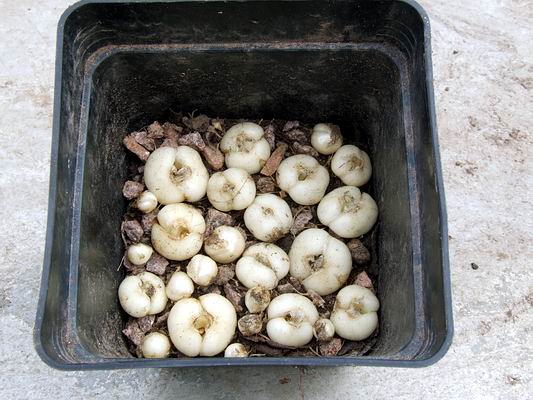
Fritillaria bulbs in pot
I am repotting some of the fritillarias that I have been growing in plastic pots for a few years to see how they are doing - this way I can gauge if I am getting the correct watering frequency. Watering is the biggest difference that I have found between growing in clay pots and plastic ones - I have to water the plastic ones much less. As the trial results look reasonable I have decided to go completely over to growing all the bulbs in plastic pots even the fritillaries which have mostly been in clays until now.
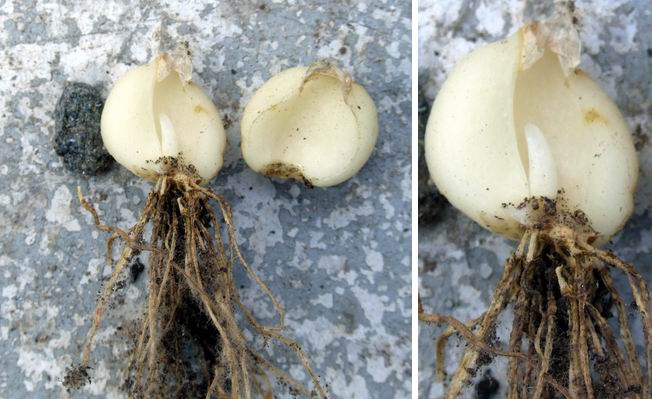
Twin scaled fritillaria bulb split
It is very easy to speed up the rate of increase of the basic twin scaled fritillaria bulbs by simply breaking the two halves apart. The one with the bud, which is easily seen at the base of the scale to the left, and in the enlargement, will carry on to flower as normal next year. While there is no sign of a bud on the other scale, one will now form since the dominant bud has been removed, much like pinching out the end bud on a plant to encourage the side shoots to grow.
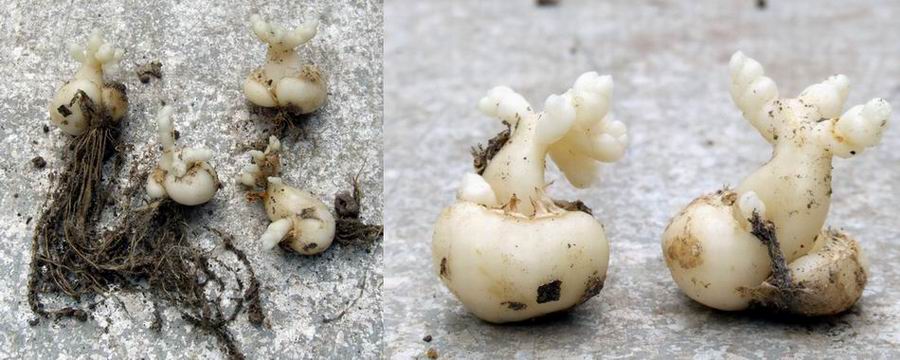
Fritillaria pontica bulbs.
Some forms of Fritillaria pontica have bulbs that are very easily recognised by the antler-like form that grows from between the scales, I know of no other fritillaria that behaves like this.
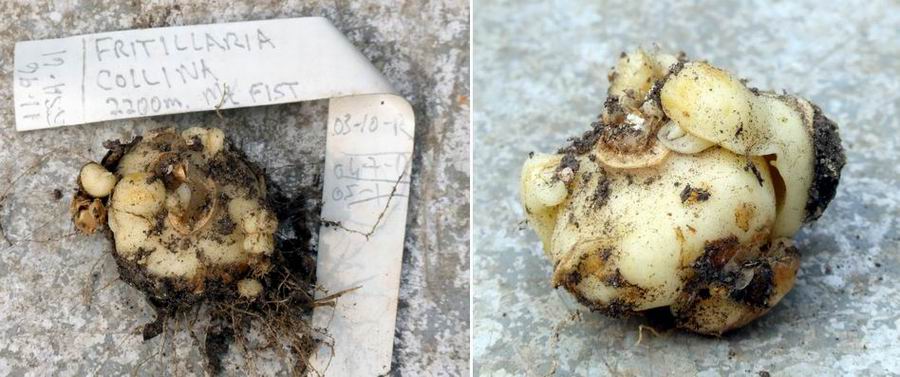
Fritillaria collina bulb.
The lovely yellow flowered Fritillaria collina also has an interesting bulb with yet another variation. It falls somewhere in between a simple twin scaled bulb and one where there are more scales which wrap tightly around each other. The offsets that you can see are formed on the remains of the old bulb. The eagle eyed among you may have spotted from the label that my stock went down from 7 bulbs in 2004 to 1 bulb in 2005. The reason for this was that this pot was raised from seed collected by Joseph Halda in the wild. When they flowered in 2004 most of the seedlings turned out to be F. latifolia but one was F. collina which grows in similar areas in the wild. It must be very difficult to distinguish between some species in the wild when collecting seed and I have another two pots with a similar outcome, yet another good reason to raise bulbs from seed.

Fritillaria whittallii bulb
Fritillara whittallii is among those bulbs that produce fairly large quantities of rice grains and you can just see a few starting to appear on the scales of these bulbs. All the Eurasian fritillarias that I grow, except for F. davidii that I showed a few weeks back, produce rice on the old bulb, starting in the autumn after dormancy.
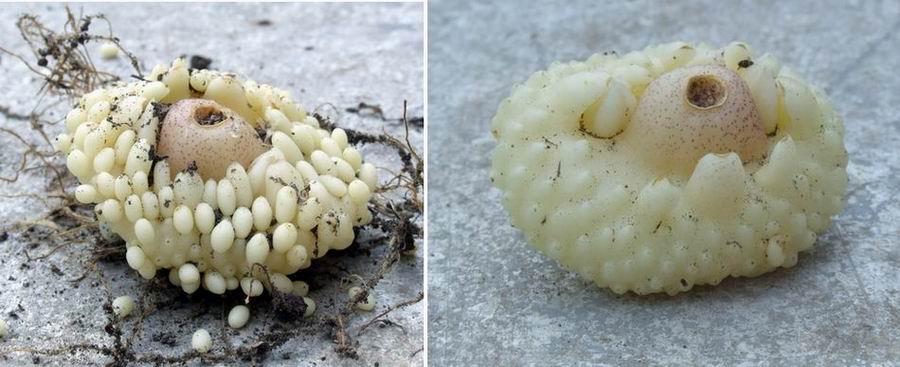
Fritillaria affinis bulb.
The North American ones like Fritillaria affinis produce rice in the spring on the new growing bulb so when you repot them the rice is attached to the new bulb not the shrivelled remains of last year's bulb. Fritillara affinis has one of the most fascinating bulbs, showing clearly the rice grain is attached to the new bulb. I always remove the rice grains that rub off easily and then grow them on in a separate pot from the mature bulbs, that way I can give them extra feed to get them to flowering size that bit sooner.
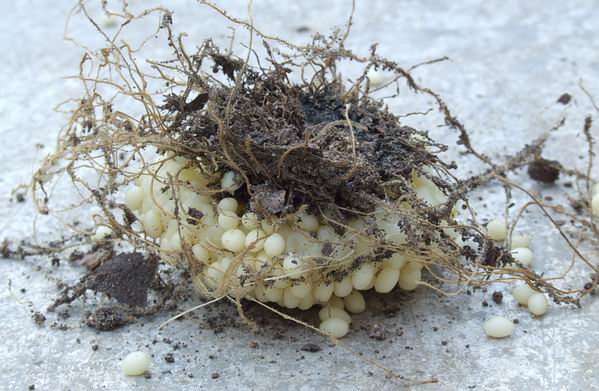
Fritillaria affinis bulb underneath
Looking underneath the Fritillaria affinis bulb you can clearly see the dark shrivelled remains of last year's bulb which in this case has dried off nicely. The remains of the old bulbs are a potential source of rot, if conditions in the pot are too wet the old bulb starts to go rotten and this can infect the new bulb.
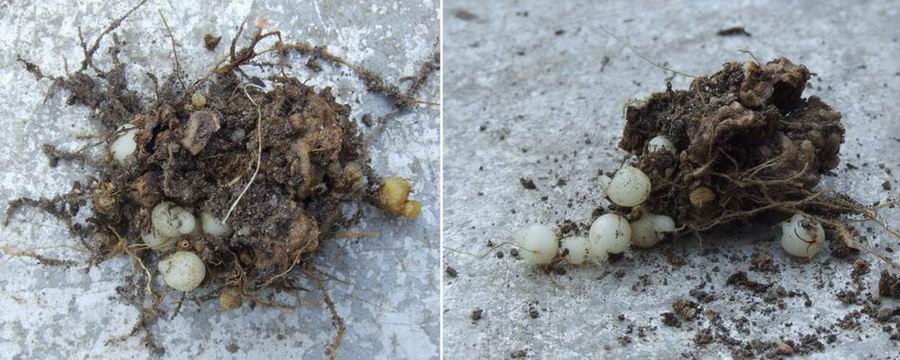
Rotten Fritillaria affinis bulb.
Fortunately, even if the bulb does rot some of the rice grains will survive so you have not lost everything. Bulb growing is often two steps forward and one step back, sometimes it is one step forward and two steps back but you just start again and hopefully you have learned a lesson from nature.
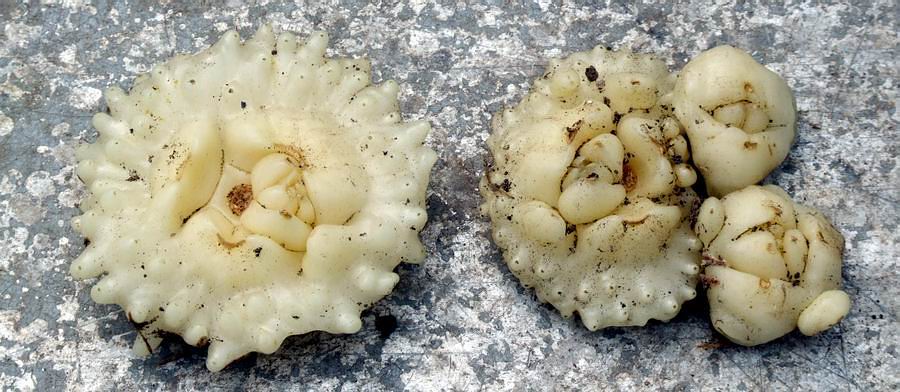
Fritillaria pudica bulb splitting
These flying-saucer-shaped rice grain bulbs can also increase by splitting as seen here. When a bulb gets big enough, more than one of the scales will produce a flower stem, or a large leaf, and a new bulb will form at the base of that stem, or leaf.
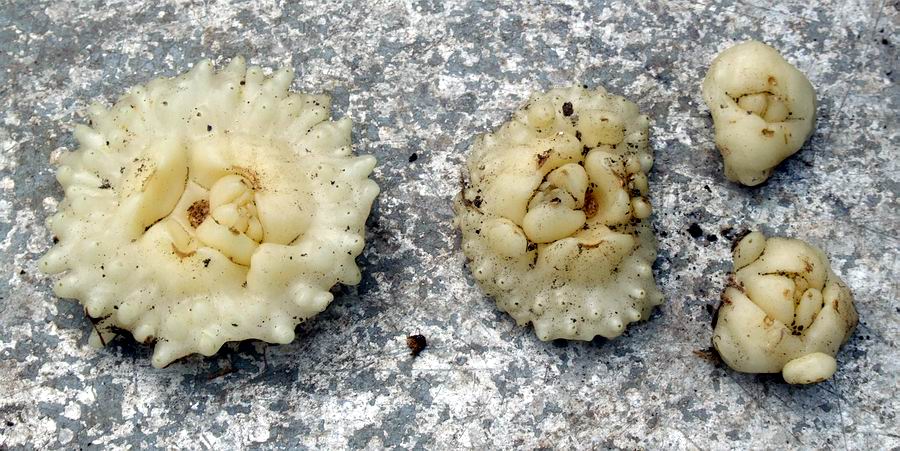
Fritillaria pudica bulb splitting 2
Here I have moved the two small bulbs which split off from this bulb - the bulb on the left is also big enough to split and may do so this coming year.
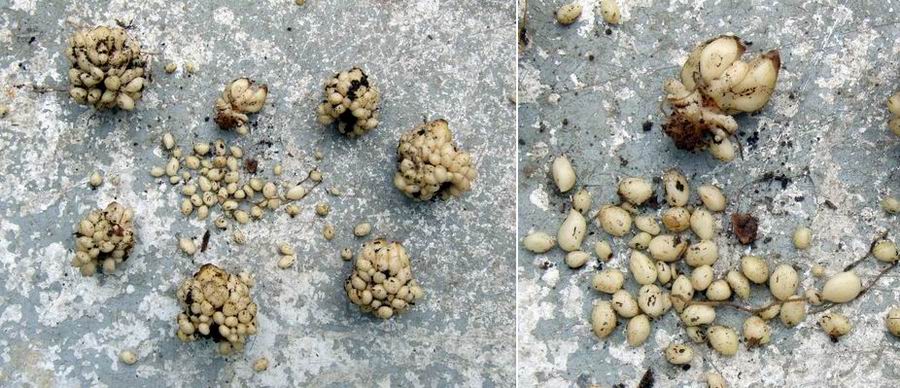
Dicentra cuccularia bulbs
Another rice grain bulb but not a fritillaria - these are the bulbs of Dicentra cuccularia. They have evolved an almost identical strategy to the North American fritillarias by producing a mass of rice grain bulbils around the lower part of the bulb. Although they are slightly better attached they can still be rubbed off from the main bulb without causing any harm. This greatly increases the speed that you can build up your stock of this charming bulb. Dicentra cuccularia is the only one of this genus that I know of with a rice grain bulb like this.

Dicentra canadensis bulbs
For instance the bulbs of Dicentra canadensis send out short stolons and form a series of small bulbs beside or at a short distance from where the parent was.
That's all for now as I have to get back to the repotting :-))
^ back to the top ^
|

